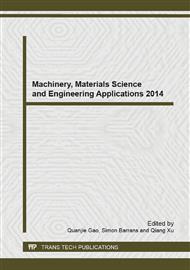[1]
N. Asnafi, On strength, stiffness and dent resistance of car body panels, Journal of Materials Processing Technology. 49 (1995) 13-31.
DOI: 10.1016/0924-0136(94)01333-v
Google Scholar
[2]
G. Ekstrand, N. Asnafi, On testing of the stiffness and the dent resistance of auto body panels, Materials and Design. 19 (1998) 145-156.
DOI: 10.1016/s0261-3069(98)00028-4
Google Scholar
[3]
S. Holmberg, P. Thilderkvist, Influence of material properties and stamping conditions on the stiffness and static dent resistance of automotive panels, Materials and Design. 23 (2002) 681-691.
DOI: 10.1016/s0261-3069(02)00079-1
Google Scholar
[4]
L. Gunnarsson, E. Schedin, Improving the properties of exterior body panels in automobiles using variable blank force, Journal of Materials Processing Technology. 114 (2001) 168-173.
DOI: 10.1016/s0924-0136(01)00727-0
Google Scholar
[5]
L.H. Zhao, Z.Z. Sun and Y.Y. Yang, Experimental research on the stiffness of cylindrical shallow shell, Journal of Material Processing Technology. 187-188 (2007) 132-135.
DOI: 10.1016/j.jmatprotec.2006.11.126
Google Scholar
[6]
L.H. Zhao, S.Y. Jiang and Z.Y. Ren, Study on the influence laws of mechanical properties on stiffness of automotive body panels, International Journal of Modern Physics. 23 (2009) 1634-1639.
DOI: 10.1142/s021797920906138x
Google Scholar
[7]
L.H. Zhao, S.Y. Jiang, Y.F. Zheng and Y.Y. Yang, FEM numerical analysis on panel stiffness of cylindrical shallow shell of automotive body, Material Science & Technology. 4 (2009) 227-231.
Google Scholar
[8]
Z.W. Xing, L.L. Zhao and Y.Y. Yang, Mechanism of springback influence on stiffness of automotive cylindrical shallow panels, Chinese Journal of Mechanical Engineering. 44 (2008) 226-230.
DOI: 10.3901/jme.2008.05.226
Google Scholar
[9]
L.H. Zhao, S.Y. Jiang, Z.W. Xing and Y.Q. Zhang, The control mechanism of stiffness of automotive shallow shells, Materials Science & Technology. 20 (2012) 131-135.
Google Scholar
[10]
S. Holmberg, B. Nejabat, Numerical assessment of stiffness and dent properties of automotive exterior panels, Materials & Design. 25 (2004) 361-368.
DOI: 10.1016/j.matdes.2003.12.005
Google Scholar
[11]
L.H. Zhao, H.P. Yu, Z.W. Xing and Y.Y. Yang, Detection technology and quantitative assessment of automotive panel stiffness, Forming & Stamping Technology. 34 (2009) 56-60.
Google Scholar


